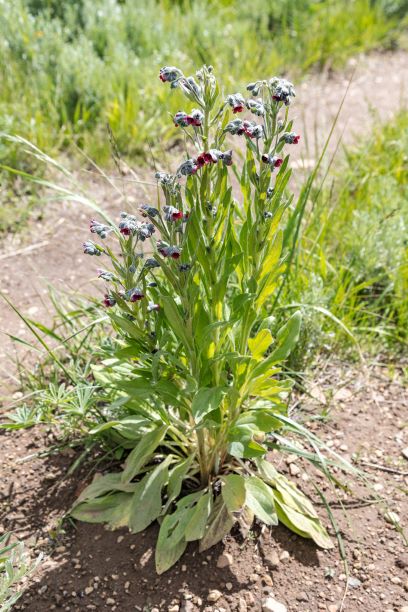Noxious Weeds:
Identification, Prevention, & Management
What are noxious weeds?
A weed is a common term used to describe any undesired plant. What may be a pretty flower to you may be a weed to your neighbor. However, a noxious weed is different because they are known to cause ecological, cultural, or economic harm and are classified under federal, state, or county laws.
Click here for full list of the declared noxious weeds in Montana or Flathead County.

Yellow Toadflax 
Houndstongue 
Orange Hawkweed
Why worry about noxious weeds?
Noxious weeds are capable of causing substantial harm because they are not native to our ecosystems. They lack natural population controls such as predators and can outcompete our native plants. Additionally, many noxious weed species do not provide forage or habitat for our native wildlife. Once established on private property, they can also challenge agricultural production and reduce property values.
Because of the damages noxious weeds can cause, it is unlawful to allow noxious weeds to propagate or go to seed on your property. For more information on noxious weed laws, you can view the Montana Code Annotated.
How do I identify weeds?
Identifying weeds can be a challenge because many of them closely resemble our native, non-harmful species. The best way to learn the noxious weeds most common in your area and micro climate. Do you live in a dry area or a wet area? Does your area get full sun or shade? These questions can help you narrow down the type of plants most likely on your property. Also, carry an ID book with you and look up any plants you’re not certain about. Montana’s Noxious Weeds online booklet.
There’s also an app for that! For help with identifying noxious weeds, we recommend the Plant Sample Submission App. This app is free and can be downloaded for either iOS or Android platforms. It allow users to send in photos of plants and include a description of the problem. A local lab will review the sample and respond with information.
Finally, you can bring physical samples to the Flathead County Weeds Department or send them to the Schutter Diagnostic Lab.
I already have weeds, how do I get rid of them?
Unfortunately, it’s unlikely that your property will ever truly be free of weeds. Complete irradiation is almost impossible because seeds can blow in from you neighbors’ property and be transported on vehicles and equipment. Many noxious weed seeds are also viable in the soil for years, sometimes decades. However, it is possible to reduce your level of weeds so they are easier to manage and only require periodic maintenance.
To manage your weeds it’s best to develop an integrated weed management plan. This plan should be comprehensive and include multiple weed control methods that suit your property and lifestyle. Here are a few options:
- Mechanical (mowing)
- Chemical / herbicides
- Biological (bugs)
- Grazing
- Burning
Each method has its own pros and cons and some are more effective for different species of weeds. When developing an integrated weed management plant, make sure to identify your weeds and use the methods that are most appropriate. Check out the Flathead County Weeds Department page for detailed information on each control method and how they can be used.
How can I prevent weeds from getting established?
- Revegetate disturbed sites: Many noxious weeds are quick to establish and outcompete native plants. They often start in disturbed soils such as near recent home construction or in areas of heavy livestock use. For this reason, your best defense against noxious weeds is to get other, favorable plants established quickly. Consider applying seed to a site immediately following soil disturbance. Quick establishing plants, such as some grass mixes or clover are a good start. Once this vegetation is started, noxious weeds will be more challenged to gain a foot hold.
- Use only weed seed free products: many products, such as fertilizer, manure, soil, and hay can include live weed seeds. Using products with weed seeds will establish those weeds on your property. To avoid this, purchase only certified weed seed free products.
- Use ground covers: If you have a small, bare area, such as a path or patio, consider using weed matting. This will help prevent dormant seeds in your soil from sprouting and growing from under your path. For areas where you will be planting, such as flower beds or gardens, use mulch between plants. The much, whether its bark, rock, or other material, will provide a barrier for weed establishment and slow their growth.
- Solar tarping: If you have a relatively large area that you are not ready to plant yet, solar tarping may be a temporary option. You can use thick black tarps staked down to the ground to trap heat and create an unsuitable environment for seed germination. Keep in mind, however, this method is not good for soil health and only works short-term.
Where can I go for help?
- If you live in Flathead County and have any concerns with noxious weeds, contact the Flathead County Weed Department. They can help you identify your weeds and develop a management plan that works for you. They also have an equipment rental program that includes backpack sprayers and skid-mounted sprayers. See the full list of their services here.
- MSU Extension Service has numerous publications that may be useful. Staff at the local offices are also knowledgeable and can answer many of your questions.
